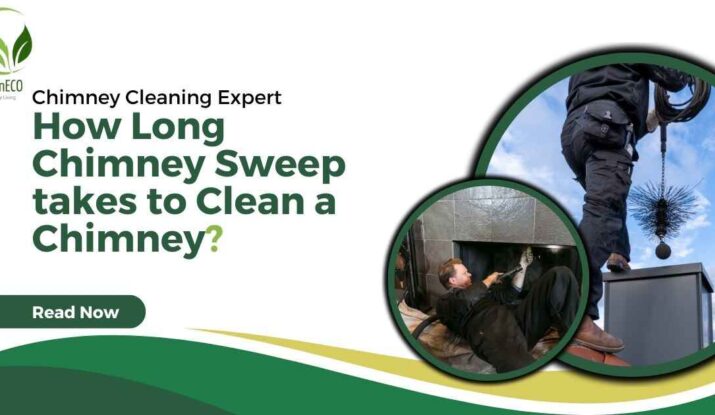Introduction
Ever wondered how long it takes a chimney sweep to clean a chimney? Chimney cleaning is a crucial task for maintaining a safe and efficient fireplace or wood stove. Neglecting this can lead to dangerous buildups of creosote, a major fire hazard. In this article, we’ll explore the process of chimney sweeping, factors that influence the cleaning time, and what you can expect during a professional chimney cleaning service.
What Does a Chimney Sweep Do?
A chimney sweep is a professional who specializes in cleaning chimneys to prevent fire hazards and ensure proper ventilation. Using various tools like brushes, rods, and vacuums, a chimney sweep removes soot, creosote, and debris from the chimney flue, ensuring safe and efficient operation of your fireplace or stove.
Factors Influencing Cleaning Time
Several factors can affect how long it takes to clean a chimney:
- Type of Chimney: Masonry chimneys might take longer to clean than prefabricated ones due to their construction.
- Frequency of Use: Chimneys used frequently accumulate more soot and creosote, requiring more extensive cleaning.
- Level of Buildup: Heavy creosote buildup can significantly extend cleaning time.
- Condition of the Chimney: Damaged or obstructed chimneys can pose additional challenges and increase the time required.
Average Time for Chimney Cleaning
On average, a professional chimney cleaning takes about 45 minutes to an hour. However, this can vary:
- Light Use, Low Buildup: 30-45 minutes
- Moderate Use, Moderate Buildup: 45 minutes to 1 hour
- Heavy Use, Heavy Buildup: 1-2 hours
Inspection Process
Before starting the cleaning, a chimney sweep will perform an inspection to assess the condition of the chimney and identify any potential issues. This includes checking for blockages, creosote buildup, and structural damage.
Preparing for the Chimney Sweep
As a homeowner, you can help prepare for the chimney sweep by:
- Clearing the area around the fireplace or stove
- Ensuring pets and children are in a safe location
- Informing the sweep of any issues you’ve noticed
Steps Involved in Cleaning a Chimney
- Setting Up the Area: The sweep will lay down protective coverings to keep your home clean.
- Cleaning the Flue: Using brushes and rods, the sweep will scrub the interior of the chimney.
- Removing Debris: Soot and creosote are vacuumed up and removed.
- Final Inspection: The sweep will check the chimney to ensure it’s clean and safe.
Different Types of Chimneys
Masonry Chimneys
Made of bricks and mortar, these are common in older homes and require careful cleaning to avoid damage.
Prefabricated Chimneys
Often found in modern homes, these metal chimneys are easier to clean but need regular inspections for wear and tear.
Wood Stove Chimneys
These chimneys connect to wood stoves and can accumulate significant creosote buildup, requiring thorough cleaning.
Common Challenges During Cleaning
Obstacles and Obstructions
Bird nests, leaves, and other debris can block the chimney and complicate the cleaning process.
Handling Creosote Buildup
Creosote can vary from light soot to hard, tar-like substance, with the latter requiring more effort and time to remove.
Frequency of Chimney Cleaning
It’s generally recommended to have your chimney cleaned at least once a year. However, if you use your fireplace or stove frequently, you might need to clean it more often. Regular inspections can help determine the optimal cleaning schedule.
DIY vs. Professional Chimney Cleaning
Pros and Cons of DIY Cleaning
- Pros: Cost-saving, flexibility
- Cons: Risk of improper cleaning, safety hazards
Benefits of Hiring a Professional
- Expertise and experience
- Access to specialized tools
- Thorough and safe cleaning
Costs Associated with Chimney Cleaning
The cost of professional chimney cleaning can vary, but on average, you can expect to pay between $100 and $300. Factors affecting the cost include the type of chimney, level of buildup, and location.
Signs Your Chimney Needs Cleaning
- Visible Soot and Creosote: Black, oily residue around the fireplace
- Poor Ventilation: Smoke not exiting properly
- Smoke Issues: Excessive smoke or odors inside the home
Safety Tips for Homeowners
Preparing Your Home
Clear the area around the fireplace and ensure children and pets are safe.
Post-Cleaning Maintenance
Regularly check for signs of buildup and schedule annual inspections.
Conclusion
Chimney cleaning is essential for maintaining a safe and efficient fireplace or wood stove. The time it takes to clean a chimney depends on various factors, including the type of chimney, frequency of use, and level of buildup.
Hiring a professional ensures thorough cleaning and peace of mind. Regular maintenance and cleaning can prevent fire hazards and extend the life of your chimney.
FAQs
How often should I have my chimney cleaned?
It’s recommended to clean your chimney at least once a year, especially before the winter season.
Can I clean my chimney myself?
Yes, but it’s advisable to hire a professional for thorough and safe cleaning.
What happens if I don’t clean my chimney regularly?
Neglecting chimney cleaning can lead to dangerous creosote buildup, which is a major fire hazard.
How do I know if my chimney is clean?
A clean chimney will have no visible soot or creosote buildup, and there should be no smoke issues during use.
Is chimney cleaning covered by home insurance?
Typically, chimney cleaning is considered routine maintenance and is not covered by home insurance.


